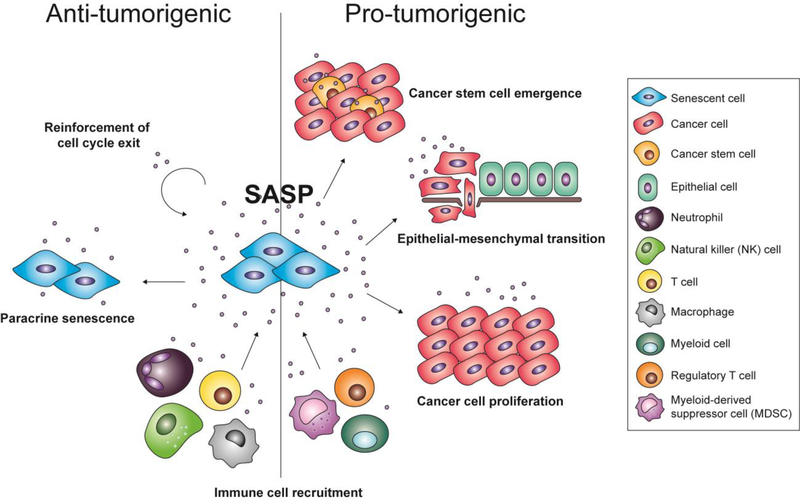Figure 1.
The pro- and anti-tumorigenic properties of the senescence-associated secretory phenotype (SASP). The SASP can act to reinforce cell cycle exit in a cell-autonomous manner, induce neighboring cells to exit the cell cycle (termed paracrine senescence), and recruit immune cells that will clear away senescent and potentially cancerous cells. Conversely, the SASP can also promote the proliferation of neoplastic cells, induce epithelial-to-mesenchymal transition in malignant cells, promote the emergence of cancer stem cells, and create an immunosuppressive or inflammatory environment that further drives tumorigenesis.

